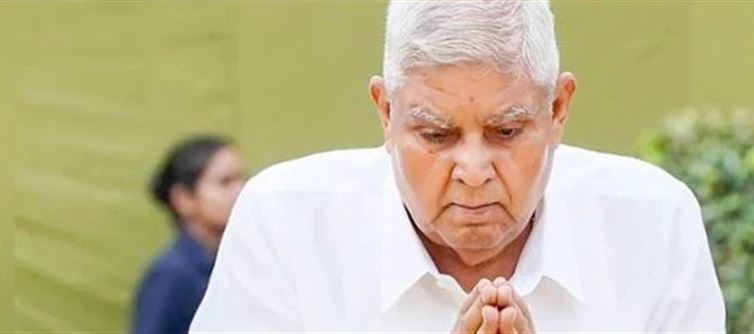
Dhankhar had "cardiac-related ailments" that led to his admission to the All-India Institute of Medical Sciences in March. He had passed out at the Golden Jubilee festivities at Kumaon university last month.
Jagdeep Dhankar Resigns:
Thanking the President "for her unwavering support and the soothing wonderful working relationship we maintained during my tenure" was the letter's major point. "The Honorable prime minister and the distinguished Council of Ministers have my sincere gratitude. I have gained a lot of knowledge while in office, and the Prime Minister's assistance and collaboration have been priceless," the letter stated.
It is significant to remember that the Monsoon Session of parliament is now in session when jagdeep Dhankar resigned. It becomes crucial to comprehend the vice presidential election process in such a scenario.
Vice President's Election:
Only members of parliament from the lok sabha and rajya sabha vote to choose India's vice president. This election also includes members who have been nominated. On the other hand, members of the lok sabha and MLAs from every state assembly cast ballots in the presidential election.
Elgiibility
An individual must be an indian citizen in order to run for vice president.
They have to be older than 35.
Meet all of the requirements in order to be elected to the Rajya Sabha.
A security deposit of Rs 15,000 must also be made by a candidate running for vice president.
If the candidate fails to receive one-sixth of the total votes or loses the election, this sum is forfeited.
How is voting conducted in the Vice Presidential election?
Both Houses of parliament cast ballots for the Vice Presidential election.
There are 543 lok sabha members and 245 rajya sabha members.
Twelve of the rajya sabha members are nominated Members of parliament who participate in the voting process.
The Single Transferable Vote System is a unique technique used in the Proportional Representation System to elect the vice president.
Each voter is only allowed to cast one vote during the voting process; however, they must rank the candidates according to their preferences.
Voters are required to mark their first preference as 1, second as 2, and so on on the voting paper.




 click and follow Indiaherald WhatsApp channel
click and follow Indiaherald WhatsApp channel